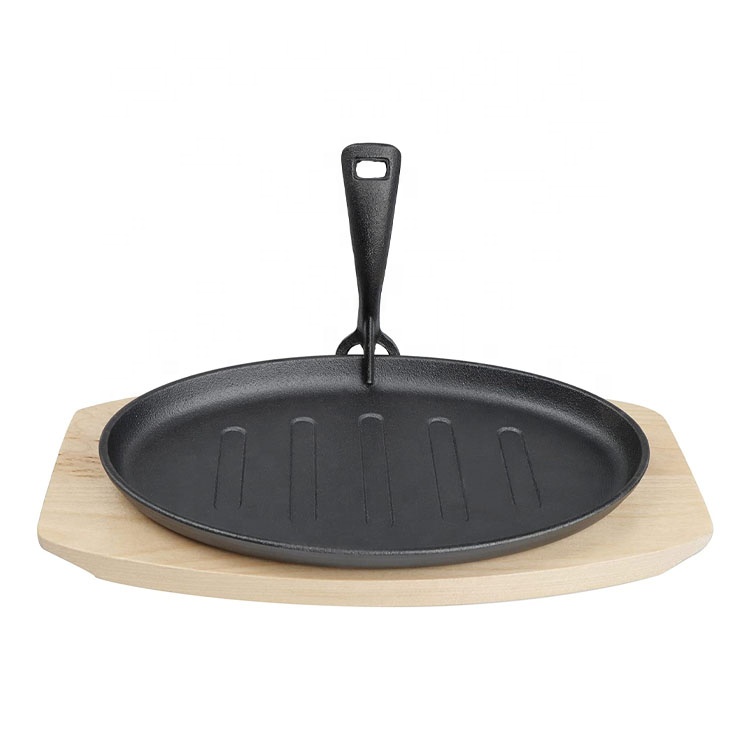
Creating a Unique Cast Skillet Recipe for Perfectly Cooked Dishes Every Time
The Art of Cooking with Cast Iron Skillets
Cast iron skillets have been a staple in kitchens around the world for centuries. Their ability to retain heat and distribute it evenly makes them an essential tool for both amateur cooks and seasoned chefs. Whether you’re searing steak, sautéing vegetables, or baking cornbread, a cast iron skillet can elevate your cooking experience and yield delicious results.
History of the Cast Iron Skillet
The origins of cast iron cookware date back to ancient China, around the 5th century BC. However, it was in Europe, particularly during the Industrial Revolution, that cast iron skillets began to gain popularity. Iron was readily available, and the durability of cast iron cookware made it a practical choice for busy households. By the 19th century, cast iron skillets had become a must-have item in kitchens across America.
Benefits of Cooking with Cast Iron
One of the most significant advantages of using cast iron skillets is their superior heat retention. Unlike stainless steel or aluminum, cast iron can maintain high temperatures, which is ideal for achieving a perfect sear on meats. This is particularly important when cooking steak or chicken, as a good sear can lock in flavor and moisture.
Another benefit is the skillet’s versatility. A cast iron skillet can go seamlessly from stovetop to oven, allowing for a wide array of cooking techniques. You can start by sautéing onions on the stove, then add your ingredients and transfer it to the oven to finish cooking, all in the same pan. This not only saves time but also reduces the number of dishes to clean.
cast skillet

Additionally, cast iron skillets are exceptionally durable. With proper care, a quality cast iron skillet can last for generations. They develop a natural non-stick surface when seasoned correctly, meaning you can use less oil and make healthier meals. This seasoning process is simple just coat the skillet with a thin layer of cooking oil and bake it in the oven to create a polymerized layer that enhances its non-stick properties over time.
Maintaining Your Cast Iron Skillet
While cast iron skillets are incredibly resilient, they do require some maintenance to ensure they remain in excellent condition. After each use, it’s best to clean the skillet with a stiff brush and hot water. Avoid using soap, as this can strip away the seasoning. For stubborn bits of food, you can use salt as an abrasive scrub. Once clean, dry the skillet thoroughly to prevent rust, then apply a light coat of oil to maintain the seasoning.
Occasionally, you may need to re-season your skillet, especially if you notice food sticking. This can be easily done by applying a thin layer of oil and baking it upside down in the oven at a high temperature for an hour.
Delicious Recipes to Try
There are countless recipes that can be made in a cast iron skillet. A classic dish is cornbread, which benefits from the skillet’s heat for a perfectly crispy crust. For dinner, try a one-pan chicken and vegetable dish, where chicken thighs are seared to golden perfection, then roasted with seasonal vegetables. Don't forget dessert—skillet cookies are not only easy to make but also give a delightful crunchy edge.
In conclusion, cast iron skillets are more than just cooking tools; they are a timeless kitchen companion that brings a wealth of benefits to home cooks. Embracing the tradition of cooking with cast iron can transform your culinary skills and inspire you to explore new recipes. With a cast iron skillet, the possibilities are endless, and the flavors are simply unmatched. So, dust off that skillet and start cooking—it’s a decision you won’t regret!
-
Season Cast Iron Perfectly with GPT-4 Turbo TipsNewsAug.01,2025
-
High Quality Cast Iron Cookware - Baixiang County Zhongda MachineryNewsAug.01,2025
-
Premium Cast Iron Pan: Durable & Perfect HeatNewsAug.01,2025
-
High Quality Kitchen Durable Black Round Cast Iron Cookware Pancake Crepe Pan-Baixiang County Zhongda Machinery Manufacturing Co., Ltd.NewsAug.01,2025
-
Cast Iron Cookware - Baixiang County Zhongda Machinery | Nonstick, Heat ResistanceNewsAug.01,2025
-
High Quality Kitchen Durable Black Round Cast Iron Cookware - Baixiang County Zhongda Machinery | Non-Stick, Heat Retention, DurableNewsJul.31,2025


